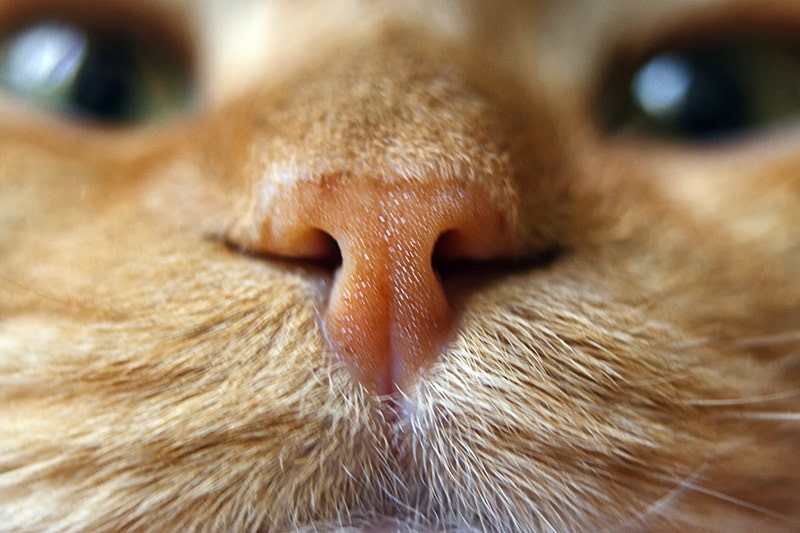A cool, wet nose is typical of a healthy cat. So, if you notice your cat’s nose is dry and warm, you might be concerned. But don’t panic! A dry nose doesn’t always signal a problem. This article explores the reasons behind a dry cat nose, when it’s cause for concern, and some fun facts about your feline friend’s incredible sense of smell.
Common Reasons for a Dry Cat Nose
Several factors can contribute to a cat having a dry nose, many of which are perfectly normal:
Environmental Factors
- Warm Location: Your cat might have been napping in a sunny spot, near a heat source, or even curled up by a warm appliance. This can temporarily dry out their nose.
- Dehydration: While less common, dehydration can lead to a dry nose. Ensure your cat has access to fresh, clean water at all times. Consider a pet fountain if your cat prefers running water. Canned food, with its higher moisture content compared to dry kibble, can also help keep your cat hydrated.
Behavioral Factors
- Grooming Habits: Cats frequently lick their noses clean, which can remove moisture and result in a temporarily dry feeling.
Individual Variation
- Normal for Some Cats: Just like people, some cats naturally have drier noses than others. This doesn’t necessarily indicate a health issue.
Sunburned Noses: A Specific Concern
Cats, especially those with light-colored fur and pink noses, are susceptible to sunburn on their noses. This can lead to dryness, redness, swelling, and flaky skin.
To protect your cat from sunburn:
- Limit Sun Exposure: Close blinds or curtains on sunny windows and keep your cat out of direct sunlight, especially during peak hours.
- Cat-Safe Sunscreen: Consult your veterinarian about using a cat-safe sunscreen on your cat’s nose. Never use human sunscreen, as it contains ingredients toxic to cats.
When to Worry: Signs of Illness
While a dry nose is often benign, it can sometimes indicate an underlying health problem. Consult your veterinarian if you observe these additional symptoms:
- Loss of Appetite: A decreased interest in food can be a sign of illness.
- Lethargy: Excessive sleeping or lack of energy could signal a problem.
- Vomiting or Diarrhea: These are common indicators of digestive upset or other illnesses.
- Respiratory Issues: Sneezing, watery eyes, or colored nasal discharge can suggest an upper respiratory infection (URI) or other respiratory illness.
Why Are Cats’ Noses Usually Wet?
A cat’s wet nose serves several important purposes:
- Cooling Mechanism: Cats sweat through their noses and paw pads to regulate body temperature.
- Enhanced Sense of Smell: The moisture on their nose helps trap scent particles, enhancing their already powerful olfactory abilities.
- Tear Duct Drainage: Some of the moisture comes from drainage from the tear ducts.
Fascinating Feline Sniffers: Fun Facts
Cats possess an extraordinary sense of smell, thanks to their approximately 200 million scent receptors.
- Scent Receptors: This is significantly more than humans and even some dog breeds.
- Hunting and Navigation: Cats use their sense of smell to hunt prey, identify safe food sources, and detect other cats’ territorial markings.
- The Flehmen Response: That funny grimace your cat makes with an open mouth? It’s called the Flehmen response, and it allows them to “smell-taste” pheromones and other intriguing scents.
Caring for Your Cat’s Nose
Generally, a cat’s nose requires minimal care as they keep it clean through grooming. However, you can gently wipe away any debris with a soft cloth if needed. Consult your vet if you notice any unusual dryness, cracking, or discharge. A change in your cat’s nose could indicate a range of health issues from infections to allergies to more serious conditions. Early detection and veterinary care are crucial for ensuring your cat’s well-being.

